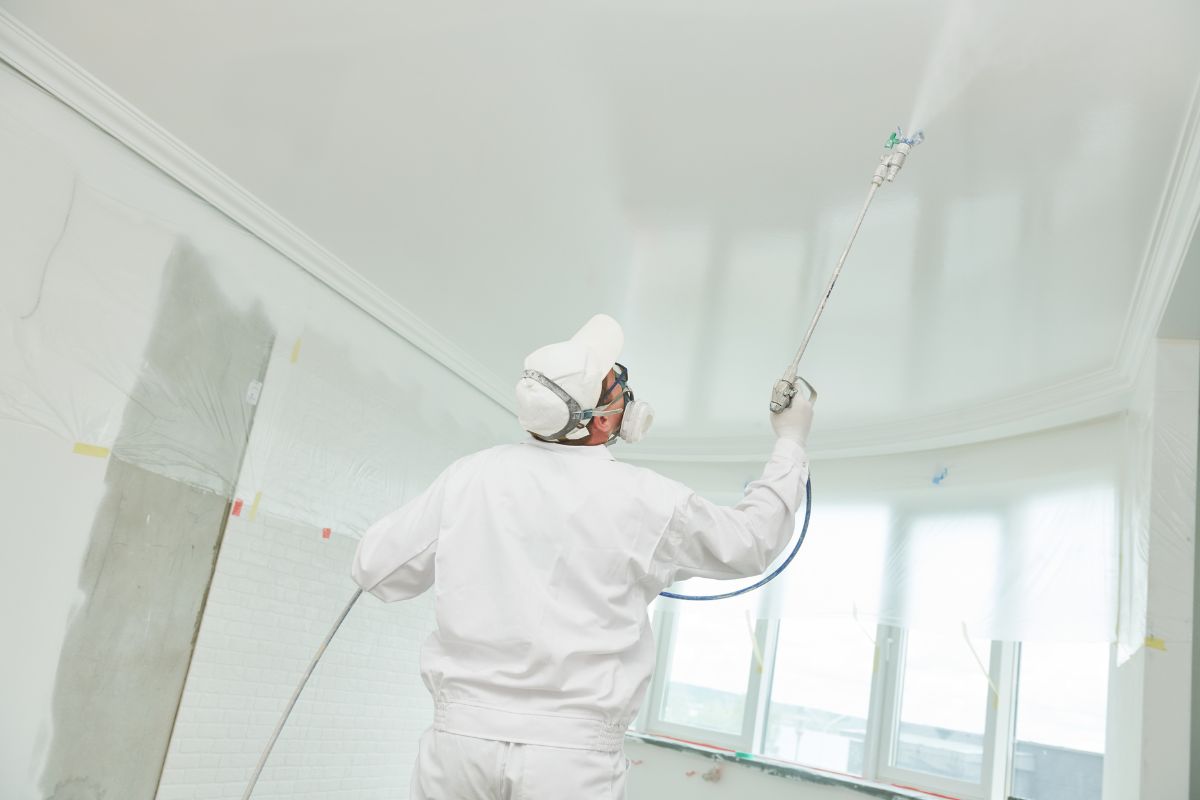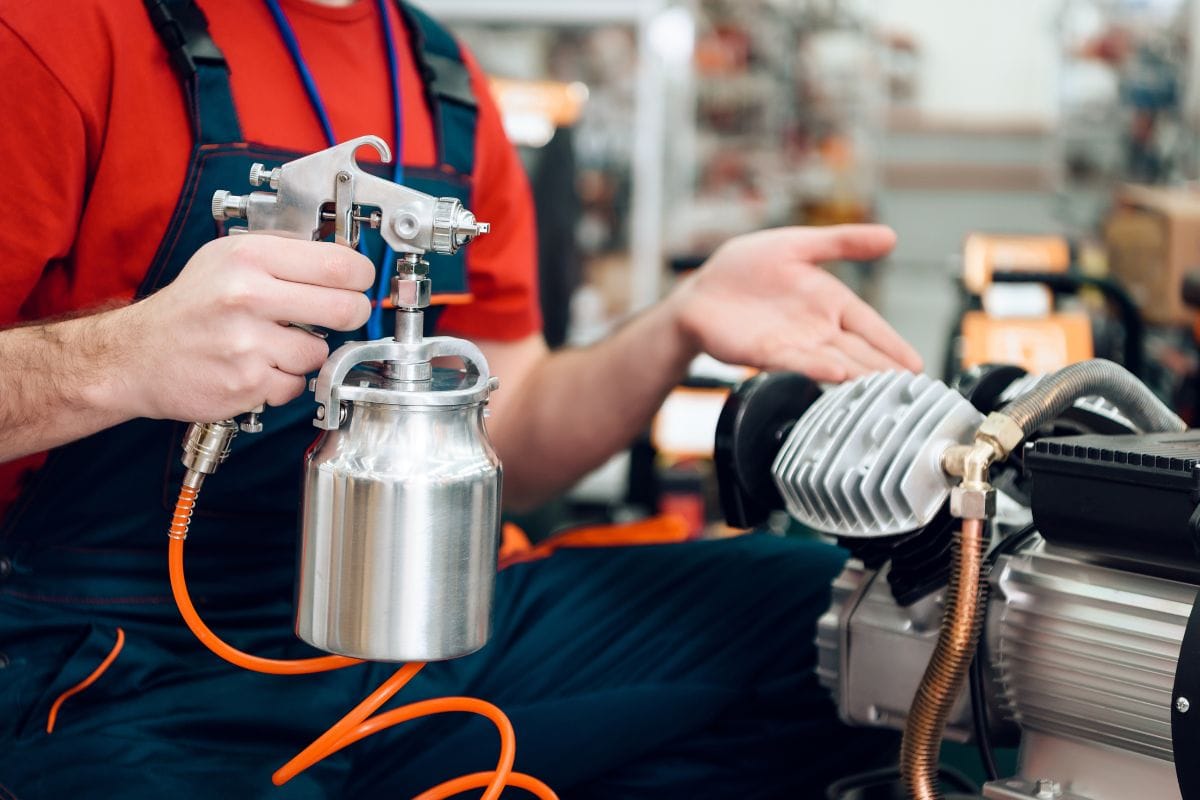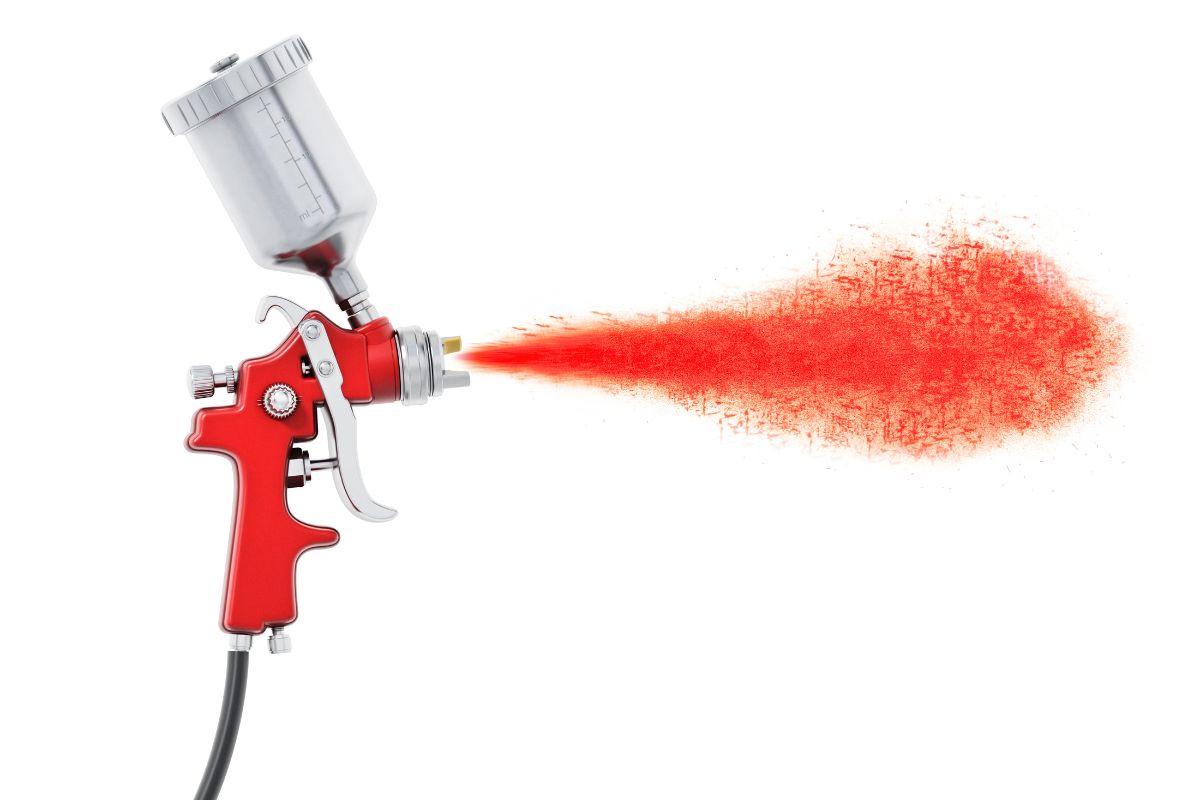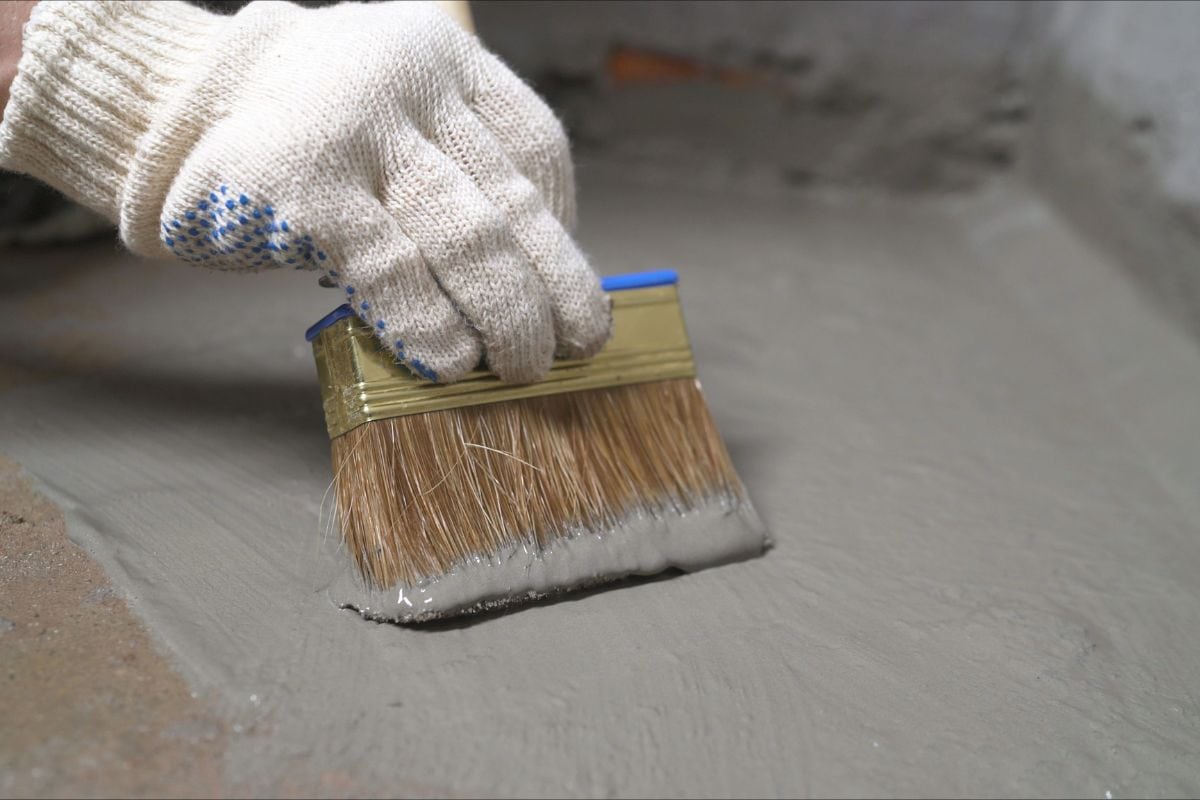Would you like to know if you can spray Drylok? Well, we have researched this topic and have answers for you. Knowing if you can spray Drylok before you use a paint sprayer is vital.
You can spray Drylok, and here's how: add it to a paint sprayer and apply it like paint.
In this article, we will learn if you can spray Drylok and how to do so. We will also cover related topics, such as how to apply Drylok with a brush and how to apply it with a roller. Keep reading to learn more.
Can You Spray Drylok?
You can spray Drylok with a paint sprayer. The exact method of spraying Drylok will vary depending on your paint sprayer of choice. There are three types of paint sprayers: airless, air compressor-driven, and high-velocity low-pressure.
Let's learn how to spray Drylok using these three types of paint sprayers.
![Industrial man painting brown timber using spray gun and air compressor. - Can You Spray Drylok? [Yes! Here's How!]](https://hvacseer.com/wp-content/uploads/2023/01/Industrial-man-painting-brown-timber-using-spray-gun-and-air-compressor.-Can-You-Spray-Drylok-Yes-Heres-How.png)
Airless
To use an airless paint sprayer, you must follow these steps to ensure it functions properly.

Selecting A Tip
The first step to using an airless paint sprayer is selecting the correct tip for what you're spraying. Drylok is thick and will require a tip with a rating between 525 and 531.
Once you have selected the correct tip, set it aside until you have primed your airless paint sprayer.
Priming
To prime your airless paint sprayer, you will need your paint, in this case, Drylok, and a waste bucket. Start by inserting your paint sprayer's suction tube into the Drylok. Now, take the smaller return tube and direct it into the waste bucket.
Switch the dial on your paint sprayer from spray to prime. Once the sprayer is in prime mode, turn the pressure dial to low pressure. Allow Drylok to run through the machine until it comes out of the return tube.
Once the Drylok comes out of the return tube, switch off the pressure. Then take the return tube and submerge it in your Drylok.
Next, you will need to prime the paint gun. With the tip still unattached, turn on the pressure again and direct the paint gun into the waste bucket. Pull the trigger on your paint gun until a steady stream of Drylok comes out of the gun.
Turn off the pressure so you can attach the tip.
Attach The Tip
Now that the paint sprayer and gun are primed fully, you can attach the tip by screwing it into place. The tip should have an arrow indicating the direction of the spray. Be sure the indicator on the tip is pointed straight forwards to ensure the proper application of Drylok.
Applying The Drylok
To apply the Drylok, ensure that the sprayer is turned to maximum pressure. Drylok is highly viscous and will require the highest pressure to spray correctly.
Point the sprayer gun straight at the surface you want to coat, about eight inches away. Be sure when spraying to move the spray gun in a straight line, and don't rotate your wrist. You will get an uneven coating if you change the angle by rotating your wrist.
Now spray your project from top to bottom with a partial overlap on each pass. Overlapping your passes will ensure complete coverage.
Air Compressor-Driven

Let's learn what you will do differently when using a conventional air compressor-driven paint sprayer.
Selecting A Tip
Unlike an airless paint sprayer, a specific tip is not required. The spray pattern can be changed by adjusting the paint and air dials.
Find a tip that offers a spray pattern that you feel comfortable working with, and you can adjust the spray pattern later.
Priming
Priming an air compressor-driven paint sprayer is the same as priming an airless paint sprayer. Be sure to first prime the paint sprayer and then the gun.
Adjusting The Spray
Before spraying with an air compressor-driven paint sprayer, you must adjust the air-to-paint ratio. Use a test piece of wood to make your adjustments.
Start by increasing the pressure to high to ensure enough force to atomize the Drylok. Now spray the Drylok on your test wood and inspect the coating.
If the coating is too thick, you will need to increase the airflow or decrease the paint. If Drylok is applied too thin, you will need to increase the paint or decrease the airflow. You can adjust the airflow and paint by twisting the knobs located on the handle.
Once your air-to-paint ratio is dialed in, you can begin spraying the Drylok.
Appling The Drylok
As with the airless sprayer, you will want to keep the paint gun pointed straight at your project to avoid uneven paint. Spray back and forth, allowing each pass to overlap slightly.
If your air compressor starts to run low on air, allow it to recharge before spraying to ensure a consistent application of Drylok.
High-Velocity Low-Pressure

Let's see how a high-velocity low-pressure paint sprayer differs from a conventional sprayer.
Selecting A Tip
An HVLP sprayer uses general tips that only affect the spray pattern, like a conventional sprayer. Find a tip that works for you, and it will work when applying Drylok.
Priming
Priming an HVLP sprayer is the same as the other sprayers. Once your paint sprayer and gun are primed, you can start adjusting the spray pattern.
Adjusting The Spray
Adjusting the spray on an HVLP sprayer will be a little different than a conventional sprayer because of how it works. An HVLP sprayer uses large volumes of air to achieve improved paint efficiency. When adjusting the sprayer with test spraying, it's crucial not to increase the air pressure too high.
Keep the pressure in your HVLP sprayer under 10 psi to allow the sprayer to function correctly. Once you have dialed in your HVLP sprayer and have the pressure under 10 psi, you can apply Drylok to your project.
Appling The Drylok
Following suit with the other sprayers, you will want to keep your paint gun pointed straight and make smooth passes back and forth over your project, ensuring it overlaps a little.
One thing to remember is that HVLP sprayers use large volumes of air. If your air compressor isn't rated with a high enough CFM (cubic feet per minute), your HVLP sprayer won't function properly.
Check that you have a compatible air compressor, and you will have no problem applying Drylok with an HVLP sprayer.
How Do You Apply Drylok With A Brush?

To apply Drylok with a brush, you will first want to select the right brush. Drylok is very viscous and will require a brush that can handle thick paint.
You can find this product here on Amazon.
Take your brush, dip it into the Drylok, and brush the area you want to coat. In order for the Drylock to keep out moisture, you must create a film with no holes.
When brushing the Drylock onto your project, press firmly and wiggle the brush's bristles back and forth to help the Drylock fit into tiny crevices. If any small holes on the surface resist being coated, dip the corner of your brush in Drylock and press the bristles directly on that spot.
You can find this product here on Amazon.
Once your entire project has been coated, allow it to dry for at least four hours before applying the second coat.
How Do You Apply Drylok With A Roller?

To apply Drylok with a roller, you will want to use a thick roller head. A thicker roller head will better apply the viscous Drylok to your project.
You can find this roller cover here on Amazon.
Pour a half inch of Drylok into a roller tray. Roll your roller in the tray while pressing firmly to ensure it picks up a fair amount of Drylok.
When you roll the Drylok onto your project, press the roller tightly on the surface and make multiple passes. By making multiple passes, you ensure you don't leave any small holes which can allow water through.
You can find this roller cover here on Amazon.
Allow your Drylok to dry for at least four hours, and then apply another coating.
Final Thoughts
In this article, we learned that you could spray Drylok and how to do so with the three types of paint sprayers. We also learned how to apply Drylok with a brush and a roller.
Remember, for Drylok to function as intended, there shouldn't be any holes, so be methodical in your application and touch up any holes you find.
We hope you enjoyed this article. If you want to learn more, check out these posts.




